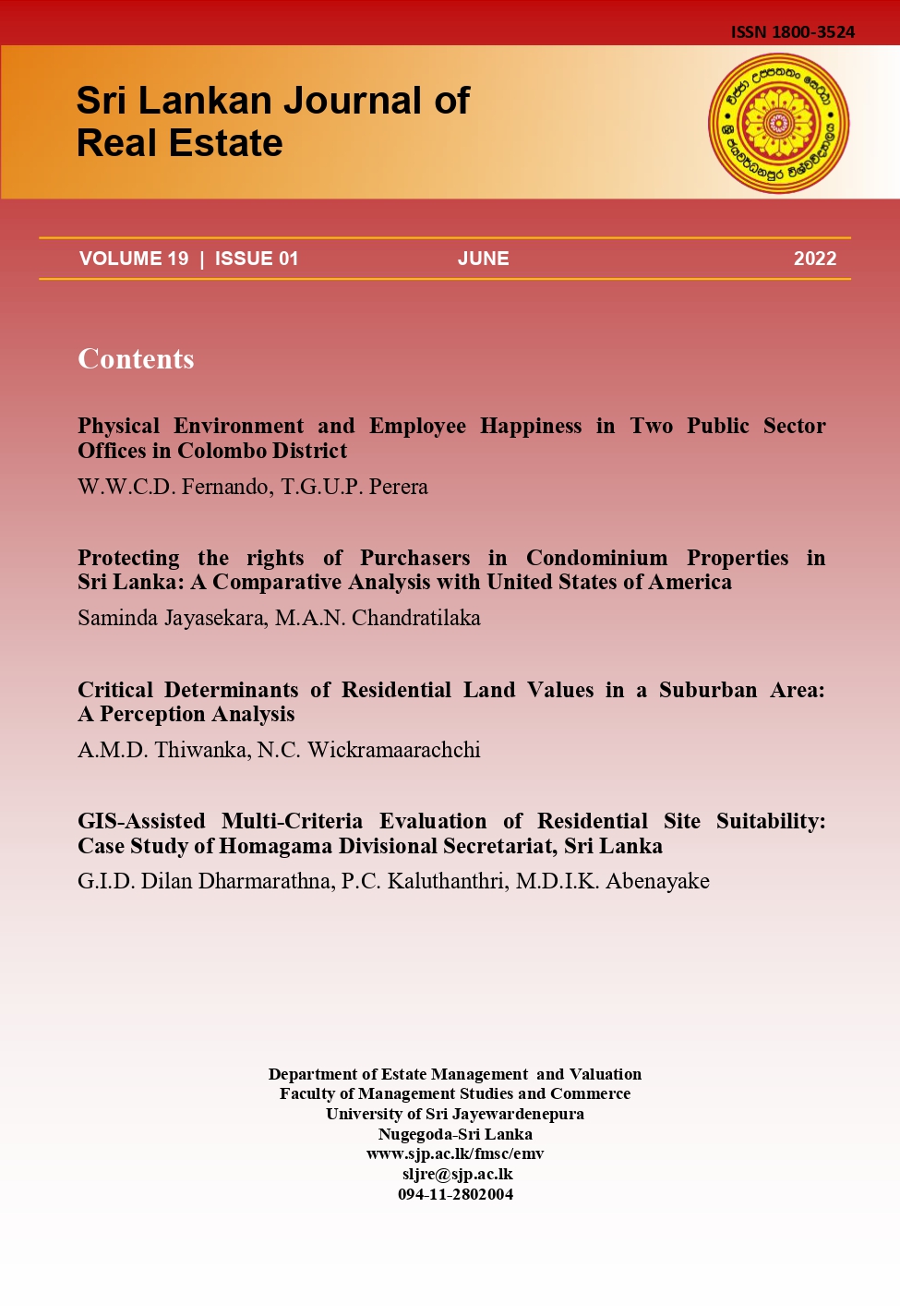GIS-Assisted Multi-Criteria Evaluation of Residential Site Suitability: Case Study of Homagama Divisional Secretariat, Sri Lanka
DOI:
https://doi.org/10.31357/sljre.v19i1.6025Abstract
Rapid urbanization is a common phenomenon and it is hardly seen that effective measures were taken provocatively to establish planned cities in Sri Lanka. This has resulted the deterioration of living condition of the cities including loss of agricultural lands and recreation areas, improper planning of infrastructure facilities for residences, commercial and industries which eventually leading to many social and environmental challenges. This unprecedented growth in city population set tremendous pressure on both government and the people. Sri Lanka is no exception of the challenges coming ahead in the way forward for sustainable development with unhindered environment. Government has taken initiatives to develop Homagama as the model technological city incorporated with necessary educational intuitions, commercial ventures and amenities. Although different lands have been allocated for mixed development projects in the area, allotting and keep vacant areas for residential development are also essential. Detail research is needed to identify the socio-economic factors, available utilities, ground factors and environment factors in order to find the best locations for residential development. Hence this study attempts to conduct a land suitability analysis for residential suitability coupled with Analytic Hierarchy Process (AHP) and tools associated with Geographic Information Systems (GIS). The sample includes 19 experts and 125 potential residents of Homanagam who selected randomly for AHP analysis. The best suitable sites determined and mapped using the weighted overlay tool in the ArcGIS. The final suitability plots of GIS analysis showed that potential residents and experts preferred to developed peripheral areas of Godagama and Kahathuduwa town centers are highly suitable for residential development. Having aim to determine residential suitability areas in Homagama Divisional Secretariat (DS), this study identified residential locational suitability criteria, residential suitability GIS framework and developed guidelines for residential development for Homagama DS area.


